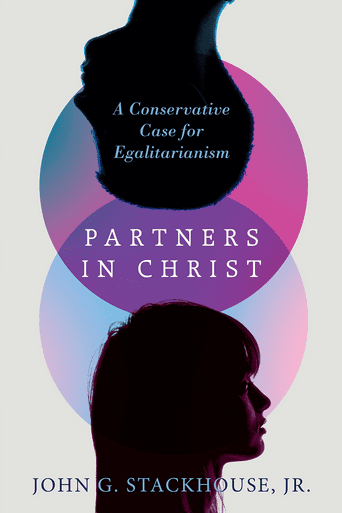 We seemingly have to take sides and then label the other side and think we’re in a war. John Stackhouse — the issue is women in ministry, women in general, women in the church, and the power position of men deciding so much about women — in the expansion and revision of a former book, asks in the first chapter of Partners in Christ: A Conservative Case for Egalitarianism this question: Whose side are you on?
We seemingly have to take sides and then label the other side and think we’re in a war. John Stackhouse — the issue is women in ministry, women in general, women in the church, and the power position of men deciding so much about women — in the expansion and revision of a former book, asks in the first chapter of Partners in Christ: A Conservative Case for Egalitarianism this question: Whose side are you on?
The issue is the decision to take sides. Here are his important words:
I have not found it useful to presume that my counterparts in any conversation were either wicked or witless. Alas, of course, some have proved to be one or the other, or both. But in this particular discussion, I have found things to be quite the other way: vast amounts of time have been spent in careful analysis of a wide range of texts; impressive arguments have been mounted that range across the whole Bible; two thousand years of church history and theological tradition have been surveyed; and social, political, psychological, and sexual implications have been considered—and on both sides of the issue. It seems evident to me that the way to best find our way through the gender debate is not to presume that we will eventually discover that one set of discussants or the other are immoral morons. Instead, I much prefer to think that we can find a way to do honor to both groups of our fellow Christians. Shall we try? (11).
Here is his definition of “feminist” and “egalitarian”:
… someone who champions the dignity, rights, responsibilities, and glories of women as equal in importance to those of men, and who therefore refuses discrimination against women. Thus, in this book feminist and egalitarian are synonyms (14).
So how do we proceed? (Badly, often, he remarks.) With method (is the right answer). What are the bad approaches?
1. Biblicism: The Bible says so. Some like “our only creed is the Bible” but don’t acknowledge the role of interpretation in their affirmations about the Bible. Others seem to like the offensiveness of their interpretations (they love its absurdity). So he proposes Bible, experience, tradition, scholarship, art — but the Bible alone is infallible. Here is his important point:
But if what we think the Bible says (that is, our interpretation) seems contrary to one or more of the other intellectual resources God has given us, should we not pause to consider whether we have made a mistake somewhere—perhaps in our interpretation of secular reason or spiritual experience, yes, but also perhaps in our interpretation of the Bible? (20)
Stackhouse then proposes a diagnostic test:
… perhaps we can consider these sentence stems” to see whether they illuminate one or another interpretation of gender as good or bad:
“It is better for church government to have only men and no women because …”
“It is better to listen only to male preachers and never to female preachers because…”
“It is better for all church meetings for men always to lead in prayer, the liturgy, music, and so on, and no women ever to lead in any of those zones, because …”
“It is important always to make sure a woman who does participate in public worship to have a man ‘over her’ in some authoritative role because…”
Can these stems be completed patriarchally in any way that makes sense besides “because the Bible [as we interpret it] says so”? (21-22).
Complementarians need to show why these situations are better or are good.
2. Cultural conformity: society says so, and therefore we should (or should not). Sometimes society speaks forcefully for what is right; sometimes it is forceful and dead wrong. We cannot assume society has the long end of the stick on anything. We need to discern — carefully and thoughtfully and in community.
3. Intuition: The Spirit says so. Here’s a good one we have perhaps all heard before:
… many women seeking greater freedom in Christian service have relied on their inner sense of God’s leading. These women were not always radicals in the heat of evangelical revivals, or in the institutions of medieval monasticism, or in the netherworld of the cults (what we more politely refer to nowadays as “new religious movements”). These women show up as respectable nuns, missionaries, Bible teachers, evangelists, and authors throughout church history. And when they have been called on to account for their ministry, as they rarely have been, many of them have responded, “The Lord led me to it” (24).
On this issue of gender, intuition is just not enough. There are too many factors and too many resources that must also be involved — like Scripture and tradition and reason.
Tune in for a second post on how John changed his mind.











